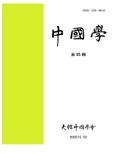- 영문명
- The Fool's Journey and the Transformation in the I Ching : A Comparative Analysis of Process Structures in the Tarot Major Arcana and the Sixty-Four Hexagrams
- 발행기관
- 대한중국학회
- 저자명
- 허로천(Luxi Xu)
- 간행물 정보
- 『중국학(구중국어문론집)』第92輯, 1~21쪽, 전체 21쪽
- 주제분류
- 인문학 > 기타인문학
- 파일형태
- 발행일자
- 2025.09.30
5,320원
구매일시로부터 72시간 이내에 다운로드 가능합니다.
이 학술논문 정보는 (주)교보문고와 각 발행기관 사이에 저작물 이용 계약이 체결된 것으로, 교보문고를 통해 제공되고 있습니다.

국문 초록
This study examines the Tarot Major Arcana and the sixty-four hexagrams of the I Ching from the perspective of “process structure,” analyzing their similarities and differences in symbolic systems and conceptions of life. The twenty-two cards of the Major Arcana, beginning with the Fool and pivoting around the Wheel of Fortune, portray an individual’s journey from external exploration to inner awakening. The I Ching, constructed upon the interplay of yin and yang, presents the cyclical patterns governing both cosmic operations and human transformation. This paper argues that key card pairings in the Tarot—such as the Magician and the High Priestess, and Judgment and the World—resonate symbolically with paired hexagrams in the I Ching, such as Qian–Kun, Bo–Fu, and Kan–Li. Although rooted in distinct cultural traditions, both systems employ imagery, structural arrangement, and numerical symbolism to articulate an understanding of fate, change, and the integration of life. Through comparative analysis, this study demonstrates that the Tarot and the I Ching share a core philosophy of unity through opposition and cyclical progression, reflecting a shared cultural psychology and philosophical inquiry in the face of uncertainty and transformation. By adopting a “structural rhythm” approach, the paper situates these two major divination systems within a unified conceptual framework, offering a new perspective for cross-cultural research on symbolism.
영문 초록
本论文从“过程结构”的视角出发,比较分析塔罗大阿卡纳体系与《易经》六十四卦在象征系统与人生观念上的异同。塔罗二十二张大阿卡纳牌从“愚者”出发,以“命运之轮”为中轴,展现个体从外部探索到内在觉醒的成长路径;而《易经》则以阴阳构造出六十四卦,呈现宇宙运行与人生变化的周期性规律。文章提出塔罗中的“魔法师与女祭司” “审判与世界”等关键牌组,与《易经》中的“乾坤”“剥复”“坎离”等覆卦在象征意 义上形成呼应。二者虽源自不同文化传统,却都通过图像、结构与数字,表达对命运、变 化与生命圆融的理解。通过对比分析,本文指出:塔罗与《易经》皆以对立统一与循环展 开为核心思想,展现了人类面对未知与变化时共同的文化心理与哲学追问。本文尝试以 “结构节奏”的方式,将东西方两大占卜体系置于同一思想框架下比较,期望为跨文化象征研究提供新的理解路径。
목차
1. 绪论
2. 塔罗“愚者之旅”的象征结构与人生过程观
3. 《易经》卦象结构与变化过程观
4. 结论
参考文献
해당간행물 수록 논문
- 중국학(구중국어문론집) 제92집 목차
- “愚者之旅”与“易”之变——塔罗大阿卡纳与《易经》六十四卦的过程比较研究
- 『목천자전』의 역사 기억과 제국 서사
- 여말선초(麗末鮮初) 사행시에 나타난 해항도시 연구
- ‘시진핑문화사상’에 내재된 문화정치적 함의 - 후난TV《마르크스가 공자를 만났을 때(当马克思遇见孔夫子)》를 중심으로
- 『說文解字』의 亦聲字 연구(1) - 形聲과 會意의 경계를 넘는 구조적 사유
- 蒲松龄『聊斋俚曲集』中“比”字句探微——兼论“比”字句的历时演变
- 18세기 티베트어 어두 복자음에 관한 연구 - 『御製五體淸文鑑』을 중심으로
- 현대중국어 도치초래구문에 관한 고찰 - 주관화와 구문확장을 중심으로
- 중국어 공손표현의 공손성 강도와 사용 양상 분석
- AI-Hub 구어체 중·한 말뭉치 활용 촉각어 ‘热’의 한국어 의미 확장 연구 - 개념적 은유·환유 네트워크 분석을 중심으로
- 교육과정-교과서 연계성 분석틀을 활용한 고등학교 『중국어』 교과서 비교 분석 - 2022개정 교육과정 검정 6종 교과서를 중심으로
- 汉字文化圈视阈下汉字词学习的优势与障碍分析 ——以韩国为例
- 낙관적 비관주의자, 거마이(戈麦) 시(诗)의 역설과 구원
- 한·중 드라마 콘텐츠 산업 비교 연구 - 산업 구조와 글로벌 전략을 중심으로
- 16∼17세기 갤리언 무역에 의한 명대 은 유통량과 경제적 충격의 구조적 분석
- 全面抗战时期韩人在华办报活动研究——以《东方战友》为中心
- 종교다원주의 관점으로 본 천잉닝(陳攖寧) 선학(仙學)사상의 현대성 고찰
- 근대 중국의 국민경제론과 개혁방안 - 국가 주도 경제의 기원
- 농자판(农家饭), 도농 정체성, 그리고 양생 - 중국판 시골밥의 문화적 다의성
- 중국의 소프트파워 담론과 문화외교 전략 - 도전과 과제에 대한 소고
- 청년 친화성을 중심으로 한 항저우 모델 연구
- 중국의 라이브커머스에서의 왕홍(网红)의 역할과 소비자 지속사용의도에 미치는 영향
- 中国对韩国签证政策的演变特征研究 —— 以2016~2024年期间为研究中心
- Z세대 중국인 유학생의 유학동기가 진로결정수준에 미치는 영향 - 디지털역량의 매개효과
참고문헌
교보eBook 첫 방문을 환영 합니다!

신규가입 혜택 지급이 완료 되었습니다.
바로 사용 가능한 교보e캐시 1,000원 (유효기간 7일)
지금 바로 교보eBook의 다양한 콘텐츠를 이용해 보세요!



